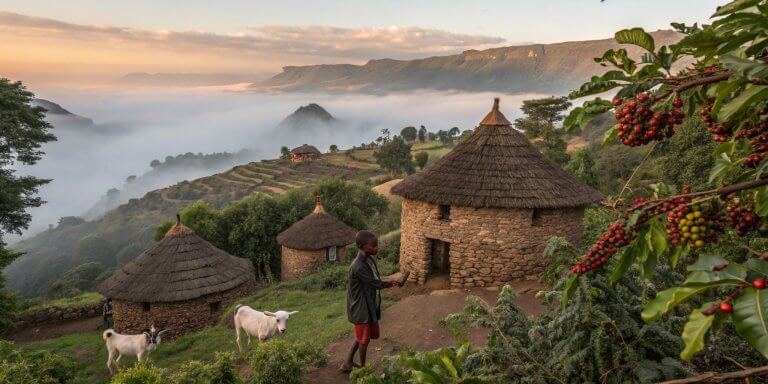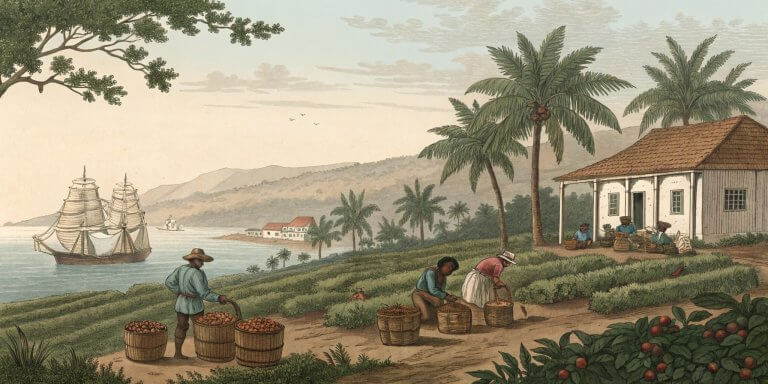
Coffee, more than just a drink, is a powerhouse in the global economy. Its impact on millions of lives, especially in the countries that produce it, is profound. As the second most traded commodity globally, coffee is a lifeline for the economies of over 70 countries, generating billions in revenue and supporting millions of farmers. However, this economic power is not without its challenges, including price fluctuations, climate change, and the struggle for fair wages. Let’s delve into the economic might of coffee and the countries that rely on it.
The Global Coffee Industry: A Massive Market
B billions of people consume coffee worldwide, and its production is an economic lifeline for many developing countries. Globally, the coffee industry generates more than $200 billion in revenue annually, with over 3 billion cups of coffee consumed daily.
Although coffee is produced in over 50 countries, the bulk comes from just a few: Brazil, Vietnam, and Colombia.
Brazil, the world’s largest coffee producer, accounts for 37% of global coffee production, with Vietnam and Colombia closely behind.
The global demand for coffee is on a steady rise, with consumption increasing by 2-2.5% annually. This growth is a testament to the enduring popularity of coffee, not just in traditional markets like Europe and North America, but also in emerging economies like China and India.
This steady growth reflects the growing popularity of coffee worldwide, not just in traditional markets like Europe and North America but also in emerging economies like China and India.
Coffee as a Lifeline for Developing Countries
For many developing countries, coffee is the backbone of their economies. Coffee exports in nations like Ethiopia, Uganda, and Honduras make up a large portion of foreign exchange earnings. Coffee is a vital source of income for rural populations, supporting around 25 million farming households worldwide.
In Ethiopia, the birthplace of coffee, over 15 million people rely on coffee for their livelihoods. Similarly, coffee is one of Honduras’s top exports, providing jobs for over a million people. This level of dependence on coffee means that any changes in the global coffee market, such as price fluctuations or environmental impacts, can have far-reaching consequences for these nations.
Economic Challenges Facing Coffee-Producing Countries
While coffee can be highly profitable, it’s also a volatile market. Various factors influence coffee prices, including global supply and demand, weather conditions, and currency fluctuations. In 2018, for example, coffee prices plummeted to their lowest point in over a decade, leaving many farmers struggling to break even
Climate change poses another significant threat to coffee production. Coffee plants are susceptible to changes in temperature and rainfall. As a result, many coffee-growing regions are experiencing lower yields due to erratic weather patterns, disease, and pests. The impact of climate change is particularly concerning for countries like Colombia, which produces high-quality arabica beans that are vulnerable to rising temperatures.
To cope with these challenges, some farmers are turning to more sustainable farming practices, such as shade-grown coffee, which helps protect the plants from extreme weather. However, these methods are often more expensive, and many smallholder farmers need help affording the necessary investments.
The Dominance of Brazil, Vietnam, and Colombia
Brazil is by far the largest producer of coffee, providing around a third of the world’s total coffee supply. The country’s vast size and favorable climate make it ideal for coffee cultivation, and Brazil has developed a highly efficient coffee production system. However, the government also faces challenges, such as labor shortages and the increasing impact of climate change.
Vietnam, the second-largest coffee producer, has risen rapidly in the coffee industry thanks to government support and trade liberalization policies introduced in the 1990s. Vietnam mainly produces robusta beans used in instant coffee and blends, making the country a crucial player in the global coffee market.
Colombia, known for its high-quality arabica beans, has built a global reputation for producing some of the best coffee in the world. However, like other coffee-producing countries, Colombia’s economy is vulnerable to fluctuations in coffee prices and the effects of climate change.
Fair Trade and Sustainability Efforts
Movements like Fair Trade have emerged to promote more equitable trading conditions and address coffee farmers’ issues. Fair Trade ensures that farmers receive a fair price for their coffee, which helps them cover their costs and invest in better farming practices. These initiatives have been significant in countries where smallholder farmers struggle to compete in the global market.
Sustainability is another key focus of the coffee industry. Many coffee producers are adopting practices that reduce environmental impact, such as using fewer pesticides and conserving water. Shade-grown coffee, for example, helps preserve biodiversity and requires fewer chemical inputs, making it a more sustainable option.
However, widespread adoption of these practices remains challenging due to the high costs of transitioning to more sustainable farming methods.
The Coffee Supply Chain: From Farm to Cup
The journey from coffee farm to cup is long and complex, involving several production, processing, transportation, and retail stages. Coffee beans are typically grown in developing countries, where they are harvested and processed before being exported to consumer markets, primarily in Europe and North America. This global supply chain connects coffee lovers and producers from all corners of the world, creating a shared bond over a beloved beverage.
The supply chain is highly fragmented, and while coffee farmers bear the risks associated with growing the crop, most profits are made further down the supply chain—by exporters, roasters, and retailers. Farmers often receive just a tiny fraction of the final retail price of a cup of coffee.
This disparity highlights coffee-producing countries’ challenges in capturing more value from their coffee exports.
Coffee and Geopolitics
From the colonial period to modern trade agreements, coffee has long played a role in geopolitics. Historically, European powers competed to control coffee-growing regions, using plantations in colonies to supply the growing demand back home. Today, trade agreements between coffee-producing nations and significant importers like the United States and the European Union shape the global coffee market.
Trade policies, tariffs, and subsidies can significantly impact coffee-producing countries, affecting their access to global markets and their ability to compete worldwide. Additionally, political instability in coffee-growing regions can disrupt production and lead to price fluctuations, further complicating the economic landscape for coffee farmers.
Conclusion
Coffee is not just a beverage; it’s a global commodity with far-reaching economic, social, and environmental impacts. The future is still being determined for the millions of people who rely on coffee production for their livelihoods. Climate change, price volatility, and economic inequality pose significant challenges for the coffee industry. However, efforts to promote sustainability, fair trade, and more equitable distribution of profits offer hope for a more stable and prosperous future.
As we continue to enjoy our morning cup of coffee, we must recognize the complexities behind this seemingly simple pleasure. The coffee we drink connects us to a global network of farmers, traders, and consumers, each playing a vital role in the journey from bean to cup.






